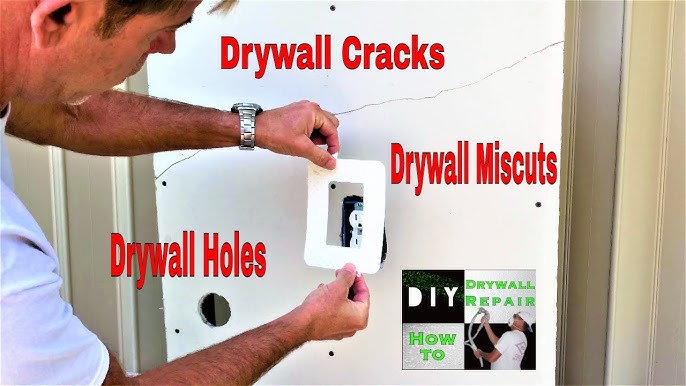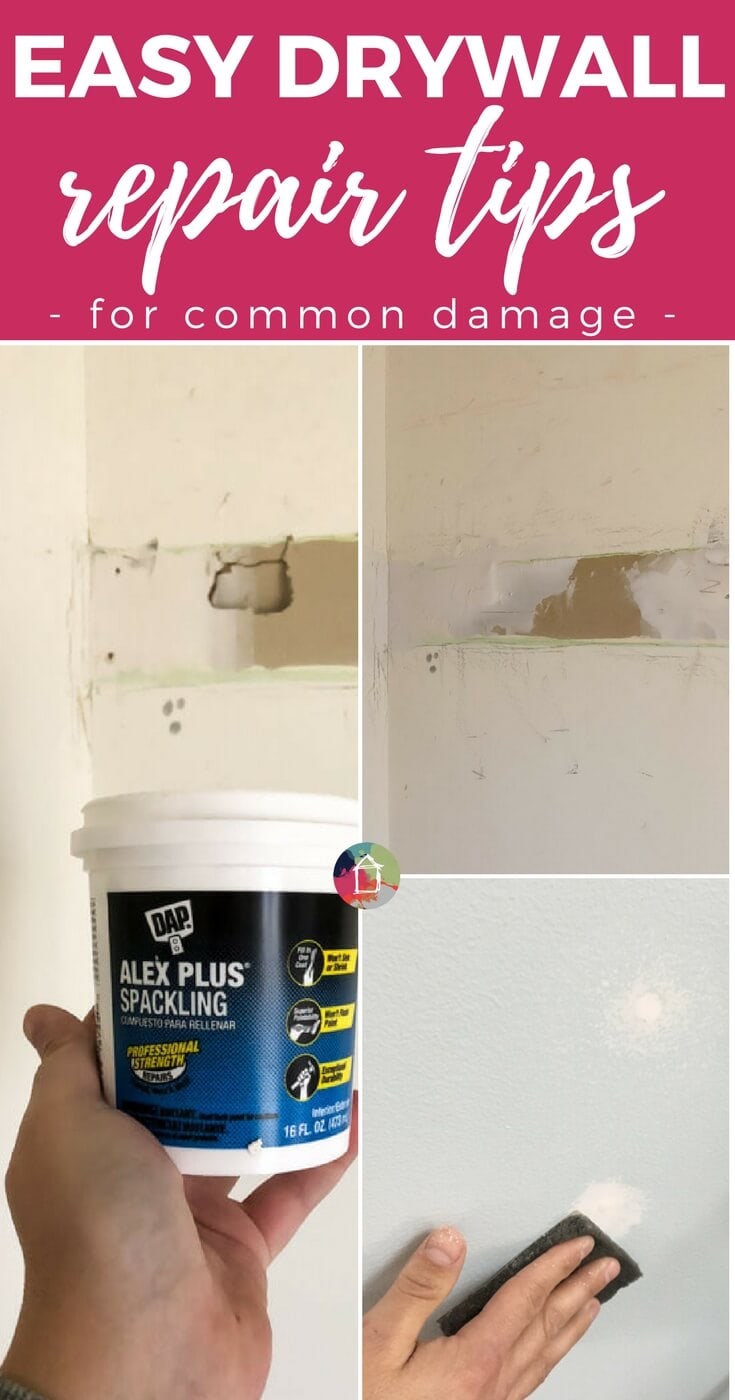Discover the most effective Practices for Effective Drywall Repair and Setup
The art of drywall repair work and installment calls for a mix of ability and accuracy. Understanding the vital tools is necessary for accomplishing a seamless coating. Comprehending the detailed process can make a substantial difference in the outcome. Appropriate methods for mudding and taping are also crucial. What stays is the knowledge of maintenance that guarantees durability. These components with each other create a polished end result worth exploring further.

Important Tools for Drywall Repair and Installation
When embarking on drywall repair work and setup, having the right tools can significantly boost the performance and top quality of the job. An energy knife is crucial for cutting drywall sheets specifically, while a drywall saw can help in making much more elaborate cuts. Taping knives, available in different sizes, are crucial for applying joint compound smoothly and equally. A drywall sander, preferably with a dust collection function, aids achieve a refined finish, lowering the demand for comprehensive clean-up.
Furthermore, a determining tape guarantees accurate dimensions, and a degree ensures that setups are straight and plumb. Safety and security gear, including dirt masks and safety glasses, ought to not be overlooked to shield versus debris and dirt. Finally, a stud finder help in finding mounting participants, ensuring secure setup. By furnishing oneself with these vital devices, the fixing and installment process comes to be a lot more manageable and causes a professional-quality end result.

Step-by-Step Overview to Patching Holes
Patching holes in drywall calls for a methodical strategy to ensure a smooth fixing. First, the location around the hole should be cleaned and any type of loosened debris got rid of. For little holes, a putty blade can be used to use a lightweight spackle, pushing it into the hole and smoothing the surface. After it dries out, sanding is important to create a level surface. For bigger holes, a spot of drywall may be essential. This includes reducing a piece of drywall slightly bigger than the hole, securing it to the wall surface with screws, and making use of joint substance to cover the joints. As soon as the substance dries, it ought to be sanded smooth. Finally, topping the patched location before paint will certainly guarantee an also coating. Adhering to these steps will certainly lead to a professional-looking repair service that blends perfectly with the surrounding wall surface.
Techniques for Smooth Drywall Installation
Accomplishing smooth drywall installment needs mindful preparation and execution. It is necessary to determine and cut drywall sheets properly to reduce gaps. Utilizing an energy knife, installers should rack up the board before snapping it along the cut line, making certain clean edges. Correctly aligning the sheets is vital; beginning from the top and functioning down assists preserve harmony.
Attaching drywall to the studs requires constant spacing, usually every 16 inches, making use of screws instead of nails for much better hold. This method reduces the risk of pops in time. Additionally, surprising the seams in between sheets enhances structural integrity and lowers the presence of joints.
Ultimately, making use of the appropriate density of drywall for details locations-- such as moisture-resistant kinds in bathrooms-- more adds to a perfect surface. Adhering to these strategies will cause a professional-looking and smooth setup, establishing the stage for the succeeding ending up procedures.
Ending Up Touches: Insulation and Mudding
Ending up touches, such as mudding and taping, play a necessary duty in achieving a sleek drywall surface. Taping entails using a thin strip of drywall tape over the joints and joints, hop over to these guys making certain a seamless look. This procedure assists stop splits and develops a strong bond between drywall sheets. It is crucial to select the best sort of tape, with paper and fiberglass harmonize being one of the most typical alternatives.
Mudding, or using joint compound, adheres to insulation. This compound loads in voids and smooths out the surface for an uniform surface. It is commonly used in multiple layers, with each layer needing to completely dry before fining sand. Proper strategy includes feathering the edges to mix the substance into the surrounding drywall, minimizing exposure.
When completed properly, mudding and taping boost both the structural and aesthetic stability of the drywall setup, causing a professional-quality coating.
Tips for Maintaining Your Drywall After Installation

Additionally, preserving a constant interior moisture level can protect against warping or mold and mildew development. Making use of a dehumidifier in moist locations, like cellars, is recommended. It's additionally beneficial to occasionally repaint locations that show wear, as this protects the underlying product. Ultimately, when relocating furniture or setting up fixtures, caution should be worked out to prevent harming the drywall. By adhering to these maintenance suggestions, house owners can prolong the life of their drywall, securing it continues to be an attractive attribute of their insides.
Frequently Asked Concerns
What Safety Equipment Is Needed for Drywall Repair Work and Installation?
For drywall repair service and setup, necessary safety equipment consists of safety and security goggles to safeguard eyes, dust masks to avoid inhalation of bits, handwear covers for hand protection, and knee pads for comfort during prolonged kneeling. drywall contractors.
How Do I Determine the Drywall Thickness Needed for My Project?
To figure out the drywall density required for a job, Our site one must consider the wall surface's architectural requirements, local building regulations, and the planned usage of the room, typically choosing 5/8-inch or 1/2-inch drywall.
Can I Fix Drywall Without Removing Furnishings From the Area?
Yes, drywall can be repaired without eliminating furnishings from the space. Cautious planning and protective Clicking Here steps can lessen mess, allowing for reliable fixings while keeping surrounding things secure from dirt and damage throughout the procedure.
What Types of Drywall Are Finest for Different Environments?
Moisture-resistant drywall is suitable for cooking areas and washrooms, while soundproof drywall fits shared walls in apartments. Fire-rated drywall is best for garages, and standard drywall functions well as a whole living locations, making sure durability and viability for numerous atmospheres.
The length of time Does It Take for Drywall Mud to Dry Completely?
Drywall mud typically takes 24 to 2 days to completely dry completely, relying on variables like moisture and temperature (drywall contractors). Thicker applications might require longer drying times, while thinner layers can dry out faster. Proper air flow aids drying
The art of drywall repair and installment requires a mix of skill and accuracy. When embarking on drywall repair and installment, having the right tools can considerably improve the efficiency and quality of the work. An energy blade is necessary for reducing drywall sheets exactly, while a drywall saw can aid in making much more detailed cuts. Achieving seamless drywall installment needs careful planning and implementation. Moisture-resistant drywall is ideal for washrooms and kitchen areas, while soundproof drywall suits shared wall surfaces in apartment or condos.